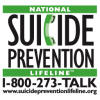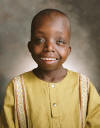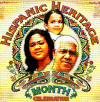|
|
 |
|
Hispanic Heritage Month, 9/15 - 10/15
|
|
Spotlight On
|
|
|
|
|

Latina
Pre-Med Student Reflects on Her Heritage
Sylvana Hildago speaks about her goals, and differences
between opportunities available to her from those of her
parents' generation.
Fulfilling a Dream At Yale University.
|
|
Suicide Prevention Week, 9/6 - 12
|
September is Craniofacial Acceptance Month |

Suicides increase dramatically in these three groups of
adolescents.
Suicides among US youth at the highest in 15 years: Spotting the
Warning Signs
There are dramatic racial and ethnic differences in suicide
rates:
Suicide in the US: Statistics and prevention
Cultural bias Complicates Suicide-Prevention Efforts
Suicidal intent among African Americans is often not admitted.
|

The World Craniofacial Foundation transforms children's
lives through surgery and aftercare for craniofacial
deformities. Compare this "after" photo of Petero with the
"before" photo on the Foundation's website:Petero
Byatakonda: A Journey of Hope
How do the responses of health care providers to
the child affect parents? Psychological
issues in cleft lip and palate
|
|
Article of the Month |
|
Saha S, Beach MC, Cooper, LA. Patient Centeredness, Cultural
Competence and Healthcare Quality. Journal of the National
Medical Association; 100:11 (1275 - 1285) accessed on 6/10/2009
at http://www.nmanet.org/images/uploads/Publications/OC1275.pdf. |
Cultural competence and patient
centered care are two approaches to improving the quality of
health care delivery. The concept of patient centered medicine,
started in 1969 by Balint, emphasized the uniqueness of each
person. Others developed the concept to describe that
patient-centered clinical method and the patient-centered
interview where the physician aims to better communicate with
the patient to understand the illness through the patient's
eyes. It has expanded beyond the emphasis on
improving provider-patient communication to focus on the
importance of other aspects of
care as convenience of office hours, ability to get appointments
when needed, being seen on time, having services nearby, and
patient-centered outcomes (quality of life, functional status).
The concept of cultural competence has developed in
response to the challenges of care to groups which differed from
the mainstream US population. There are now national
standards for health systems and federal mandates to increase
cultural competence. Initially, cultural competence models
focused on improving health care services for immigrant groups
with limited English proficiency and with different cultural
norms. Models of cultural competence were to provide
bridges between providers and patients through use of
interpreters and cultural brokers while stressing respect and
awareness for different cultures. To avoid stereotyping,
cultural competence meant that providers were to gather some
knowledge about the cultural traditions of the groups within
their clinical practice, as well as attitudes and skills that
would be universally relevant.
Patient-centered care and cultural competence have
several principals in common: respect for patients as
individuals, engagement of patients as partners, effective
communication about illness and treatment goals, and holistic
consideration of the socio and cultural context of the patient's
illness experience. The difference between these concepts
is that patient-centeredness focuses on improving care for all
through examination of processes, while cultural
competence is focused on improving quality of care for patients
of color and disadvantaged populations which have experiences
demonstrated health disparities.
|
|
Did You Know? |
- Suicide rates are highest in the US for
non-Hispanic Whites, 12.9/100,000 and for American
Indians/Alaska Natives, 12.4.
- American Indian adolescents have the
highest risk of suicide; their suicide rate is more than 2
times that of their peers from other racial/ethnic groups:
52.9/100,000.
- A North Carolina study of
comparing the health literacy of Hispanic and non-Hispanic
patients (and patient guardians) found that 74% of Spanish
speakers and 7% of English speakers had less than adequate
functional health literacy.
- A study of pain in sickle cell disease
found that patients frequently manage even severe pain at
home rather than in health care settings.
|
|
|
|




